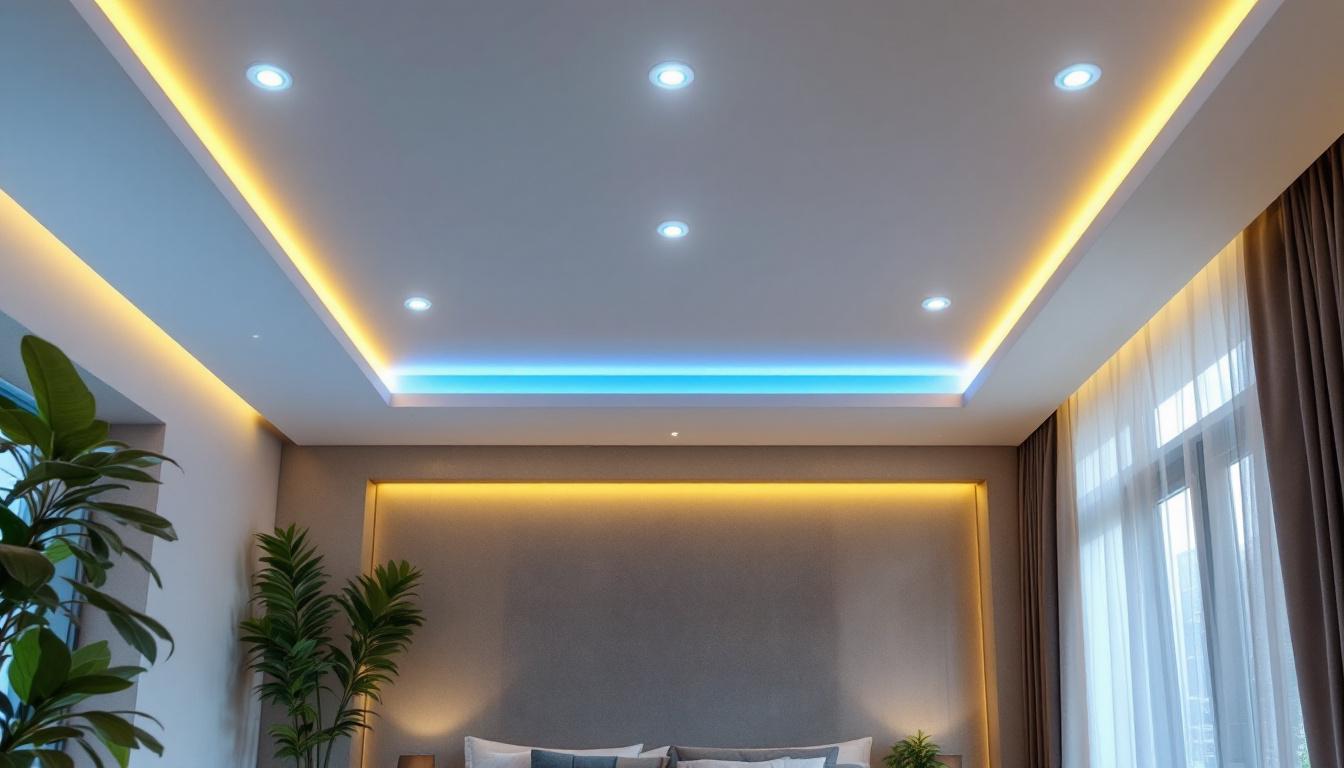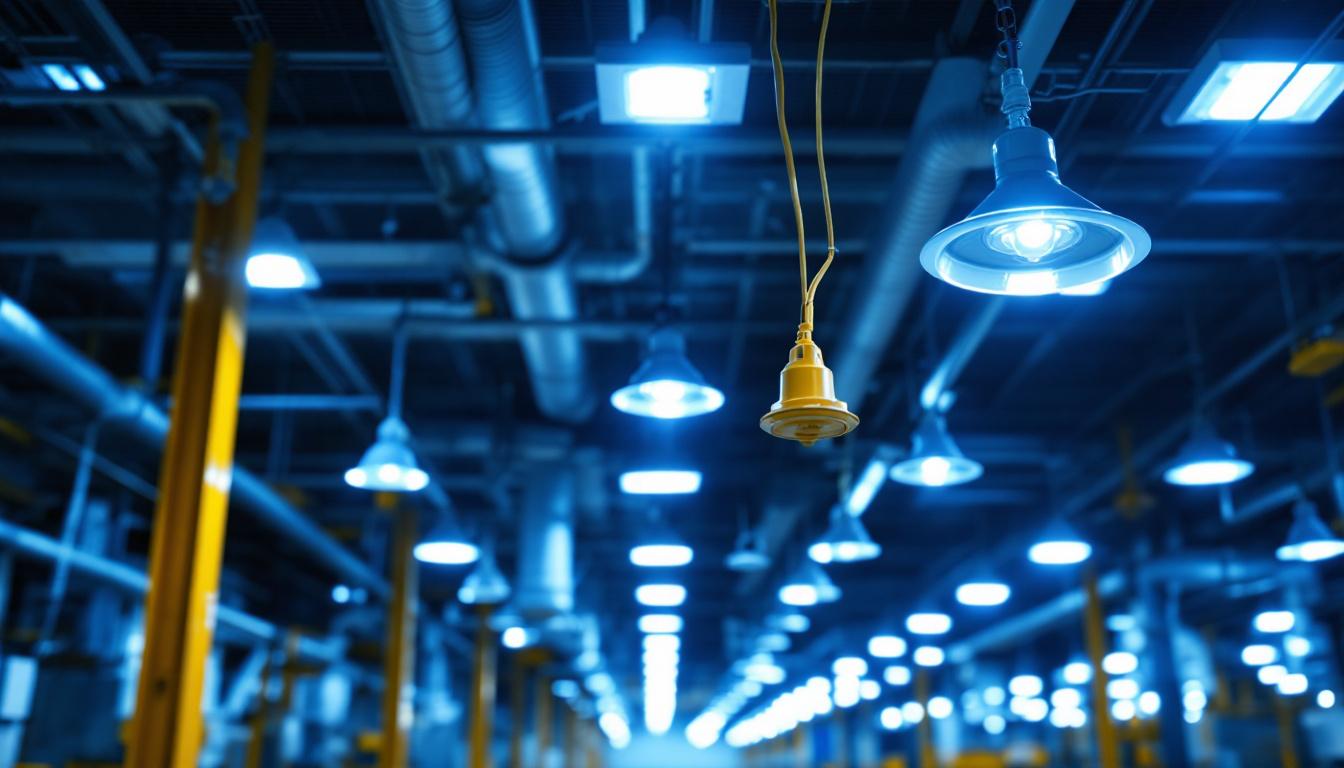
LED recessed ceiling bulbs have revolutionized the lighting industry, offering a blend of energy efficiency, longevity, and design flexibility that traditional lighting solutions struggle to match. For lighting contractors, mastering the nuances of these fixtures is essential not only to meet client expectations but also to optimize installation processes and ensure safety.
At their core, LED recessed bulbs are designed to fit flush within ceilings, creating a clean, modern look while providing effective illumination. Unlike surface-mounted fixtures, these bulbs are installed within the ceiling cavity, which demands specific considerations regarding housing, wiring, and thermal management.
Contractors must be familiar with the various types of LED recessed bulbs, including retrofit kits that convert existing fixtures and new construction housings designed for fresh installations. Understanding these distinctions helps in recommending the right product for each project, ensuring compatibility and performance.
LED recessed bulbs offer several advantages that make them a preferred choice in residential, commercial, and industrial settings. Their energy consumption is significantly lower than incandescent or halogen bulbs, often reducing electricity use by up to 80%. This translates into substantial cost savings over time, a critical selling point for clients focused on sustainability and operational costs.
Moreover, LED technology provides superior lifespan, with many bulbs rated for 25,000 to 50,000 hours of use. This longevity reduces maintenance frequency, an important factor in commercial spaces where fixture access may be challenging or disruptive.
Additionally, LED recessed bulbs generate less heat compared to traditional lighting, enhancing safety and reducing cooling loads in climate-controlled environments. Their versatility in color temperature options—from warm white to daylight—allows contractors to tailor lighting atmospheres to specific applications, whether for cozy residential rooms or bright retail displays.
Furthermore, the dimmability of many LED recessed bulbs adds another layer of customization, enabling users to adjust brightness levels according to the time of day or specific activities. This feature is particularly beneficial in multipurpose spaces, such as conference rooms or living areas, where lighting needs may vary significantly. By incorporating dimmable options, contractors can enhance the overall user experience, providing clients with greater control over their environments.
Another noteworthy aspect of LED recessed bulbs is their eco-friendliness. Unlike traditional bulbs, which may contain harmful substances like mercury, LEDs are free from such toxins, making them a safer choice for both the environment and human health. This aligns with the growing trend towards sustainable building practices, allowing contractors to position themselves as knowledgeable and responsible professionals in the industry. As clients increasingly prioritize green solutions, understanding the environmental benefits of LED technology can be a powerful tool for contractors in securing projects and fostering long-term relationships with their clients.
Successful installation of LED recessed ceiling bulbs requires a thorough understanding of electrical and structural factors. Lighting contractors must evaluate the existing ceiling infrastructure, including the type of housing, insulation presence, and available space for wiring and heat dissipation.
One critical aspect is ensuring compatibility between the LED bulb and the recessed housing. Not all LED retrofit bulbs fit every housing type, and improper pairing can lead to poor performance or safety hazards. Contractors should verify manufacturer specifications and, when necessary, recommend housing upgrades to accommodate LED technology.
Thermal management is another vital consideration. LEDs are sensitive to heat, and excessive temperatures can shorten their lifespan or cause failure. Proper ventilation within the ceiling cavity and the use of IC-rated (insulation contact) housings are essential to maintain safe operating temperatures. Furthermore, the placement of the fixtures should be strategically planned to avoid heat accumulation in enclosed spaces, which can exacerbate thermal issues and impact overall lighting efficiency.
In addition to thermal management, the choice of materials used in the installation can significantly influence performance. For instance, using high-quality, heat-resistant materials can enhance the longevity of both the fixtures and the bulbs. Moreover, the integration of smart technology in LED lighting systems is becoming increasingly popular, allowing for advanced features such as remote control, scheduling, and energy monitoring. This not only improves user convenience but also optimizes energy consumption, making it essential for contractors to stay informed about the latest advancements in LED technology.
LED recessed bulbs typically operate on low voltage or standard line voltage, but contractors must confirm the electrical requirements before installation. Many LED retrofit kits are designed to work with existing line voltage wiring, simplifying upgrades, but some new construction fixtures may require specific drivers or transformers.
Ensuring proper wiring connections and grounding is paramount for safety and compliance with electrical codes. Contractors should use UL-listed components and follow local regulations to avoid potential hazards. Additionally, dimmability features are increasingly common in LED bulbs, but compatibility with existing dimmer switches must be verified to prevent flickering or reduced bulb life. It is also advisable for contractors to educate clients about the benefits of using compatible dimmers, as this can enhance the overall ambiance of a space while maximizing energy efficiency.
Moreover, the installation process should include a thorough inspection of the circuit load to ensure that it can handle the additional LED fixtures without overloading. This is particularly important in older homes where electrical systems may not have been designed to accommodate modern lighting demands. By conducting a load calculation, contractors can prevent potential issues such as tripped breakers or overheating wires, ensuring a safe and reliable lighting solution. Additionally, implementing surge protection can safeguard LED fixtures from voltage spikes, prolonging their operational life and maintaining consistent performance.
Lighting contractors play a crucial role in helping clients achieve their desired ambiance and functionality through LED recessed lighting. Beyond technical installation, understanding design principles and client preferences enhances project outcomes.
LED recessed bulbs come in various sizes, beam angles, and finishes, allowing for customization of light distribution and fixture appearance. Narrow beam angles are ideal for accent lighting or highlighting artwork, while wider beams provide general illumination. Contractors should assess room dimensions, ceiling height, and usage patterns to recommend optimal configurations.
Color rendering index (CRI) is another important factor. High CRI LEDs (above 80) reproduce colors more accurately, which is particularly important in retail, hospitality, and residential settings where visual appeal matters. Communicating these options to clients helps them make informed decisions aligned with their aesthetic goals.
Modern design trends emphasize minimalism and integration. Ultra-thin LED recessed fixtures that blend seamlessly with ceiling surfaces are gaining popularity, providing a sleek, unobtrusive look. Additionally, smart lighting controls, such as tunable white and color-changing LEDs, offer dynamic lighting experiences that can adapt to different times of day or activities.
Contractors should stay informed about these innovations to offer cutting-edge solutions that enhance client satisfaction and differentiate their services in a competitive market.
Despite their advantages, LED recessed ceiling bulbs can present challenges during installation and maintenance. Contractors often encounter issues such as improper fit, overheating, flickering, and compatibility problems with existing dimmers or controls.
To mitigate these risks, thorough pre-installation assessments are essential. This includes verifying housing dimensions, electrical compatibility, and insulation conditions. Using quality products from reputable manufacturers reduces the likelihood of defects and performance issues.
Proper training and staying updated on industry standards also empower contractors to troubleshoot effectively and implement best practices.
Overheating remains a primary cause of LED bulb failure in recessed applications. Contractors should ensure that housings are rated for LED use and that there is adequate clearance from insulation materials. In some cases, installing additional ventilation or heat sinks may be necessary.
Electrical issues such as flickering or dimmer incompatibility can often be resolved by selecting LED bulbs compatible with existing dimmer switches or upgrading to LED-specific dimmers. Testing bulbs before full installation helps identify potential problems early.
Lighting contractors must be well-versed in relevant codes and standards governing LED recessed ceiling bulbs. Compliance with energy efficiency regulations, such as those set by the Department of Energy or equivalent authorities, ensures that installations meet minimum performance criteria and qualify for potential rebates or incentives.
Additionally, adherence to safety standards, including UL listings and National Electrical Code (NEC) requirements, protects both contractors and clients from liability and hazards. Keeping abreast of updates in these regulations is vital for professional practice.
Many jurisdictions offer incentives for upgrading to energy-efficient LED lighting, which can be a persuasive selling point for clients. Contractors should familiarize themselves with available programs and assist clients in navigating application processes.
Certifications such as ENERGY STAR provide assurance of product quality and efficiency. Recommending certified LED recessed bulbs can enhance project credibility and client trust.
For lighting contractors, expertise in LED recessed ceiling bulbs is a critical component of delivering high-quality, efficient, and aesthetically pleasing lighting solutions. By understanding the technical specifications, installation challenges, design considerations, and regulatory requirements, contractors can confidently guide clients through the transition to LED technology.
Continued education and staying current with industry trends and standards will ensure that contractors remain competitive and capable of meeting the evolving demands of the lighting market. Ultimately, mastery of LED recessed lighting not only benefits clients through improved lighting performance but also enhances the contractor’s reputation and business success.
Ready to elevate your lighting installations with the highest quality LED recessed ceiling bulbs? At LumenWholesale, we provide lighting contractors like you with spec-grade lighting products at unbeatable wholesale prices. Say goodbye to local distributor markups and hello to our extensive selection that meets rigorous industry standards. With free shipping on bulk orders, you can stock up on reliable, high-performance lighting solutions and pass the savings onto your clients. Don’t compromise on quality or value. Discover wholesale lighting at the best value and make your next project shine with LumenWholesale.

Discover effective strategies for lighting contractors to tackle common challenges with exterior motion detector light switches.

Discover the pivotal role sensor lights play in modern lighting projects and why they are essential for contractors.

Discover the intriguing story behind the first prototype of the light bulb and its unexpected failures.

Discover how lighting ballasts play a crucial role in enhancing safety in lighting installations.